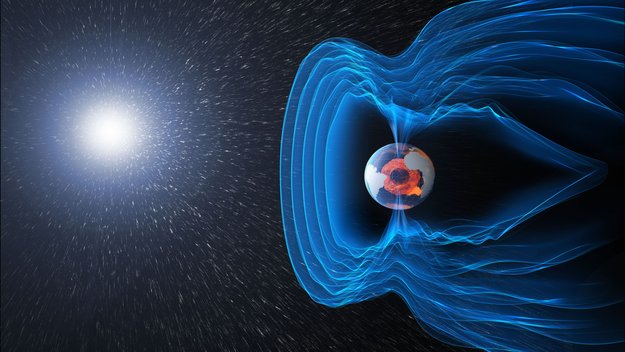Melanin radiation-protection

Away from the Earth's protective magnetic field, exposure to ionizing radiation is one of the main concerns for human space flight missions, since the radiation in space has been shown to exert considerable biological stress on living organisms [1]. As an example, manned missions to Mars have in addition to deal with high radiation levels that are present on the surface of the red planet, fact that has been once more affirmed by the Curiosity rover [2]. Therefore, materials that provide efficient radiation shielding have great potential for both of space flight and habitation, since the already used techniques leave great space for improvement.
Here on earth, there are organism (mainly fungi) that can survive in environments with extreme radiation levels, like the nuclear reactor in Chernobyl [3]. Their endurance to high radiation dosage has been attributed to the ability to synthesize melanin [4], the common black pigment found also in humans. Additionally, there are some indications that melanized fungi may be able to perform radio-synthesis; a process similar to photosynthesis where the melanin pigment is utilized to convert radiation into useful chemical energy [4]. Still, the exact mechanism that connects melanin to radiation-protection is not yet well understood. The proposed speculations suggest that melanin scatters high-energy photons, interacts with high-energy Compton electrons or quenches of the cytotoxic free radical produced by radiation.
Project overview
The current project seeks to evaluate the use of melanin as a radiation-protective material and the possible utilization in space applications. The project focuses on the use of melanin-derived materials as a protective shield from radiation and seeks to investigate the interactions between melanin and ionizing radiation. Indications that justifying this approach come from radiation-resistant fungi, which deposit layer of melanin nano-spheres on the inner side of the cell membrane [5], and from aquatic animals that employ an umbrella of melanocytes to protect the sensitive haematopoietic niche [6]. Therefore, the target of this project is dual: first to look into the possible ways to efficiently incorporate melanin into existing materials and then to evaluate their performance in shielding from different kinds of radiation.
References
- White, Ronald J, and Maurice Averner. 2001. “Humans in Space.” Nature 409 (6823): 1115
- Hassler, Donald M., Cary Zeitlin, Robert F. Wimmer-Schweingruber, Bent Ehresmann, Scot Rafkin, Jennifer L. Eigenbrode, David E. Brinza, et al. 2014. “Mars’ Surface Radiation Environment Measured with the Mars Science Laboratory’s Curiosity Rover.” Edited by Osku Kemppinen, David Cremers, James F. Bell, Lauren Edgar, Jack Farmer, Austin Godber, Meenakshi Wadhwa, et al. Science 343 (6169).
- Dadachova, Ekaterina, and Arturo Casadevall. 2008. “Ionizing Radiation: How Fungi Cope, Adapt, and Exploit with the Help of Melanin.” Current Opinion in Microbiology 11 (6): 525–31
- Dadachova, Ekaterina, Ruth A Bryan, Xianchun Huang, Tiffany Moadel, Andrew D Schweitzer, Philip Aisen, Joshua D Nosanchuk, and Arturo Casadevall. 2007. “Ionizing Radiation Changes the Electronic Properties of Melanin and Enhances the Growth of Melanized Fungi.” PloS One 2 (5): e457.
- Eisenman, Helene C, Joshua D Nosanchuk, J Beau W Webber, Ray J Emerson, Terri A Camesano, and Arturo Casadevall. 2005. “Microstructure of Cell Wall-Associated Melanin in the Human Pathogenic Fungus Cryptococcus Neoformans.” Biochemistry 44 (10): 3683–93
- Kapp, Friedrich G., Julie R. Perlin, Elliott J. Hagedorn, John M. Gansner, Daniel E. Schwarz, Lauren A. O’Connell, Nicholas S. Johnson, et al. 2018. “Protection from UV Light Is an Evolutionarily Conserved Feature of the Haematopoietic Niche.” Nature 558 (7710): 445–48.